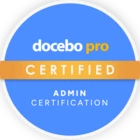Recently, my team has reported learners who have completed their courses in significantly less time than the course should take. For example, one learner completed a nine-hour e-learning module in 55 minutes, according to the report. I cannot see anything in the settings that would allow them to proceed without completing prior sections. Is there something I can specifically check to prevent this?
Question
Users completing courses "early"
Log in to Docebo Community
Enter your email address or username and password below to log in to Docebo Community. No account yet? Create an account
Docebo Employee Login
or
Enter your E-mail address. We'll send you an e-mail with instructions to reset your password.







